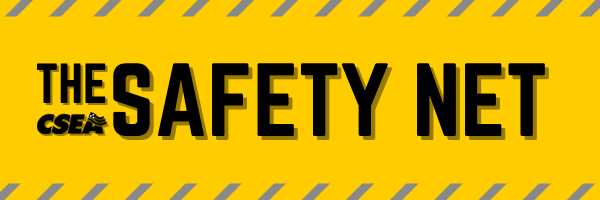
The Occupational Lung Diseases edition: November 2021
OCCUPATIONAL LUNG DISEASES
Industrial workers aren’t the only ones at risk for occupational lung diseases. Almost anyone who works outside of the home is at risk for exposure. In fact, the most common setting for occupational asthma is indoor work environments such as schools, hospitals, and office buildings, likely caused by exposures to mold, cleaning chemicals, or construction dust. Although your employer is responsible for administering preventative measures to control the risk of exposure, it is important to know how to recognize hazards in your workplace and take action.
DID YOU KNOW?
According to the American Lung Association, occupational lung diseases are the primary cause of occupation-associated illness in the U.S. based on frequency, severity, and preventability of the illnesses.
KNOWLEDGE IS POWER
Most Common Occupational Lung Diseases
- Occupational asthma
- Chronic Obstructive Pulmonary Disease (COPD)
- Interstitial or fibrotic lung diseases
- Hypersensitivity pneumonitis
- Lung cancer
- Lung infections
- Bronchiolitis obliterans/airway destruction
Dangerous Contaminants in the Workplace
- Cleaning Chemicals
- Mold
- Asbestos
- Crystalline Silica
- Hexavalent Chrome
- Carbon Monoxide
- Lead
To learn more about regulations, prevention, and employer requirements, check out our fact sheets:
- Chemicals in the Home
- Mold
- Asbestos in the Home
- Working Around Asbestos
- Asbestos in the Workplace
- Crystalline Silica
- Hexavalent Chromium
- Carbon Monoxide
- Lead
TREATMENT + PREVENTION
Employer Requirements
Best practices in avoiding exposure to toxic substances is through engineering controls, such as local exhaust or dilution ventilation.
To learn more about PPE and the hierarchy of controls for workplace hazards, check out our fact sheets on Hazard Control and Respiratory Protection:
- Hazard Control & PPE
- Respiratory Protection
- Respiratory Protection Employer Requirements
- Masks and Respirators
Actions You Can Take
What to do if you suspect a problem at your workplace:
- Request a Safety Data Sheet or other work exposure information from your employer
- Document and report unsafe conditions to your supervisor and Local or Unit President
- Request a workplace inspection through your Local or Unit Leadership
MEMBER RESOURCES
How can CSEA Help?
Your OSH Specialists can coordinate Indoor Air Quality (IAQ) inspections with assistance from our Industrial Hygienist in your workplace. The general protocol is to use the following:
- Occupant Surveys – documents environmental conditions (e.g., experiences, symptoms)
- Information Requests – Safety Data Sheets, chemicals used, exposure records
- Review of the Historical Context – operations of building, problem area + surrounding areas
- Environmental Sampling – past + current testing results (e.g., temperature, humidity, chemicals, contaminants)
- Physical Inspection of Workplace – additional testing + inspections of surrounding areas if needed
OSH Specialists can also provide training, technical assistance, labor-management services, and even help establish a safety & health committee in your workplace.
Contact your OSH Specialist here
Workers’ Compensation
What to do if you think you may be entitled to benefits under the New York State Workers’ Compensation Board:
Contact Fine, Olin & Anderman, LLP (FOA)
at (855) 693-8179 or visit www.foalaw.com
NEW! MEMBER SPOTLIGHT
Share your story, meme, or photo for chance to be featured in the Safety Net Newsletter!
All participants will automatically receive a prize for submitting their content relating to workplace safety & health. Submissions can be emailed to Bernadette Foley at Bernadette.foley@cseainc.org, or sent via Facebook @CSEASafetyNet or Instagram @CSEA_safety_net.
ANNOUNCEMENTS
SAVE THE DATE
The 2022 Statewide Conference on Occupational Safety & Health will be held April 1, 2022 – April 3, 2022 in Saratoga Springs!
Follow us on social media!
Facebook:@CSEASafetyNet Instagram: @CSEA_safety_net

